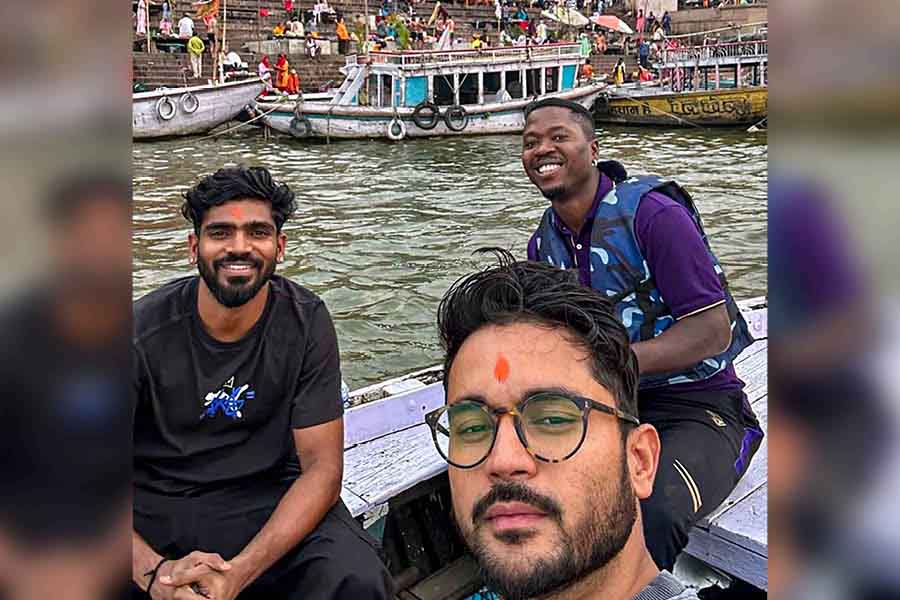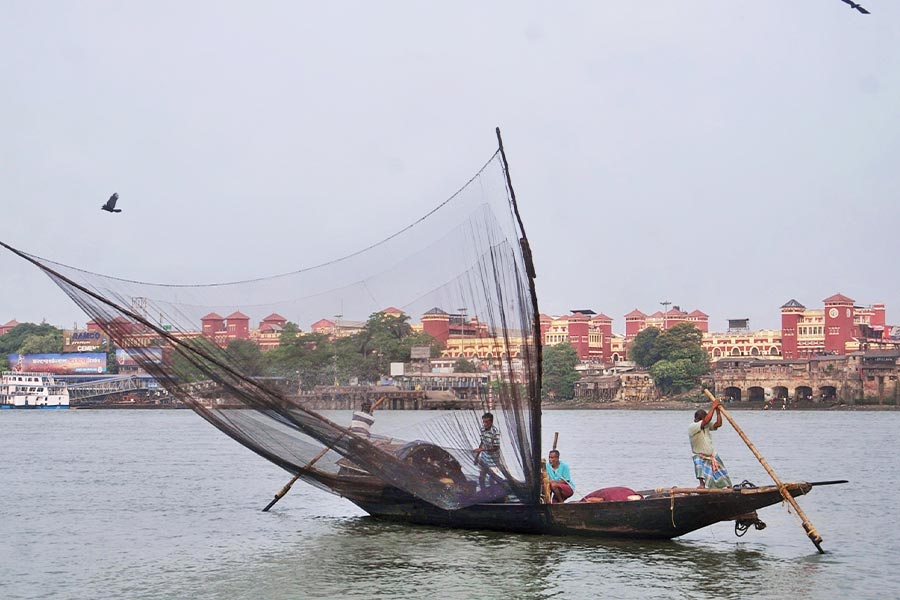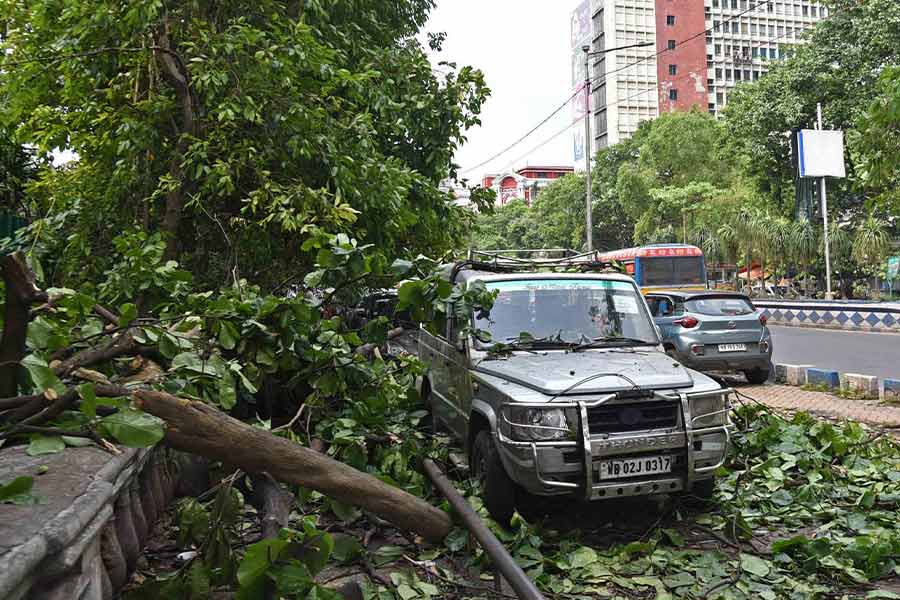Zac O’Yeah is probably best known to Indian readers as the author of the Majestic trilogy, one of the few English-language pulp-fiction thrillers set in Bengaluru. When not plotting his next novel, this author travels avidly and is a known name in the travel writing circles in the country. His latest book, Digesting India, brings together his gastronomical adventures around India and its neighbours — a journey of about four decades, and continuing. The account is both insightful and funny, taking readers on a journey of the subcontinent one plate — or cup — at a time.
Sweden-born Zac first came to India in the early 1990s. Thirty years later, he is married to the country (“or to an Indian girl, to be precise”), calls Bengaluru home, and has written over 20 books, which have been translated into different languages. He has dabbled in theatre and music, and always has a humorous line up his sleeve, along with an invitation to Coorg for Kodavu food and some good beer for people he befriends.

A staged photo at a wrestling pit in Bengaluru’s old town — a setting later incorporated in Zac’s novel, ‘Hari - A Hero for Hire’
Clare ArniMy Kolkata spoke to the author about his journey from tourist to resident, finding love, ordering fries and getting fish, Kolkata’s restaurant culture, his new book of culinary adventures, and more. Edited excerpts from the interview follow…
My Kolkata: Tell us about what brought you to India and what made you stay all these years.
Zac O’Yeah: First, I came as a tourist (in 1991) and drifted for a month or two, and didn’t understand much at all. I returned home to Sweden with a nagging feeling that I had missed some important insight. So, I returned a year later and then in 1993, and again in 1994. I thought I had seen enough of India, only to find myself here a year later as part of a writer’s delegation that was hosted by the Sahitya Akademi, and then it just went on. I came to India every year for some reason or the other until I got married to the country, or to an Indian girl, to be precise.
Is there an incident from your early years in India that helped shape your decision of living in the country?
Falling in love at first sight is quite unusual, but it happened to me when I met my wife — who was unmarried at the time, luckily, but I managed to change that.
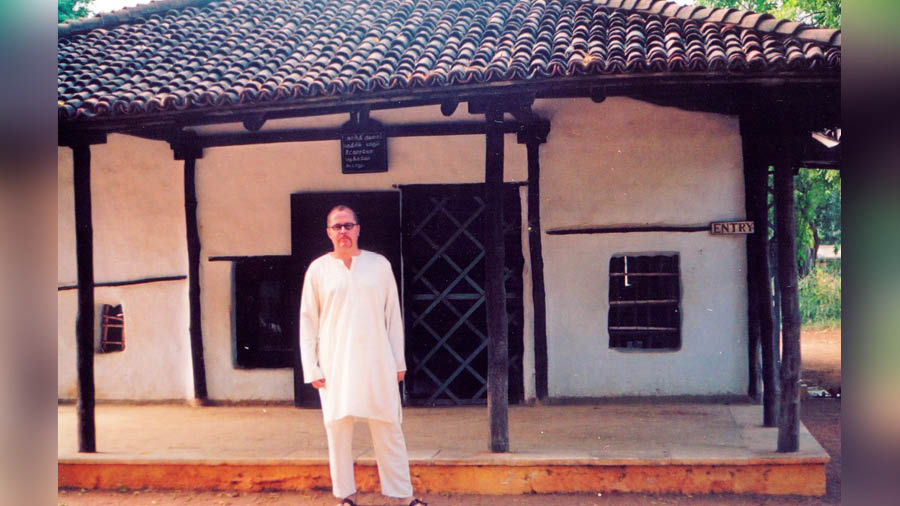
Zac O’Yeah at Sevagram, Maharashtra, in the early 1990s
Courtesy: Zac O’YeahIs there anything from your initial years in India that is a cherished memory simply because it’s funny?
I often think of all the mistakes I’ve made over the years, when I’ve ordered the wrong things at restaurants because I was ignorant. Once, in Mumbai, about 30 years ago, I asked for pomfret thinking that I’d get finger chips, because in Swedish we use the French word for fries, pommes frites, and I thought maybe they just spell it differently here. Of course, I was a bit shocked when the waiter put down a huge fish in front of me, curried in the Mangalorean manner. But I tend to learn from my mistakes, so over the years I’ve become better at ordering food, and Mangalorean-style cooking has become one of my favourite cuisines. It’s just amazing what they can make with seafood and I sometimes go to Mangalore just to eat. So, in a way it was luck by chance that I didn’t get French fries in that restaurant but an unexpectedly delightful seafood experience.
How easy or difficult was it to get accustomed to the cultural difference?
Just like with the pomfret that I mistook to mean pommes frites, it’s taken me many decades to get a reasonable understanding of Indian food, since it is so diverse. One can’t expect to find any one Indian cuisine, it is rather a matter of the many cuisines of India. It took me a while before I started to appreciate how different regions and their geographies shape the local food, which is what I write about in my new book.

A coconut stall in Kongu Nadu, Tamil Nadu, and (right) mussels for sale in Thalassery, Kerala, captured during Zac’s travels
Zac O’YeahOn the west coast, from Kerala to Mangaluru, Karwar and Goa, there’s a lot of fabulous seafood, but it’s all done in many different ways — more coconut in the south and more vinegary towards the north. Then, when one goes to Kolkata, which is also a great city to eat fish in, it’s quite different from the west coast. As you travel up the Brahmaputra, the dishes gradually change from the Bengali style to various interesting tribal specialities. Not to mention all the other cuisines famous for seafood, like Andhra, Chettinad, or the trout that you only get in Kulu Valley in the Himalayas.
Coming from a country where fish is cooked in just a few particular ways, generally in a fairly mellow non-spicy gravy or simply fried, it takes time to figure out India, I mean, you can’t go to Kerala and expect to get Bengali mustard fish, right? For a tourist it is all mind-boggling initially.
Eating curry for breakfast, like fish curry in Kerala or sambar in Tamil Nadu, would seem pretty radical to any Scandinavian.
Have you developed any habits over time that may seem odd or unusual in the context of your Scandinavian heritage?
I’d say eating curry for breakfast, like fish curry in Kerala or sambar in Tamil Nadu, would seem pretty radical to any Scandinavian. It took me a while to get used to digesting spicy breakfasts.
What’s the story behind your pen name, Zac O’Yeah?
Before I realised that I was a writer, I used to think that I could become a musician, and musicians need to have cool names — Lady Gaga’s real name is Stefani Joanne Germanotta, and Ringo Starr was really Richard Starkey! As I started playing in a band, I found out that I am tone-deaf and have no sense of rhythm. So musician was out as a career option, but the name is easy to remember and it seemed sensible to keep it as I started writing books instead.

With a street artiste during one of his travels
Zac O’YeahYour mystery novel series with Mr Majestic… what was the inspiration and how did those stories come to fruition?
The first time I got off the train in Bengaluru, I was figuring out where to go. I ended up staying for a couple of months in a lodge in the Majestic area, which has plenty of cheap hotels and interesting eateries. I felt very much at home there. The town is full of bookshops and there are good restaurants, so I thought why leave, just stay in Bengaluru and avoid getting smashed by a drunk driver. To me, Bengaluru was the kind of place I always missed when I was elsewhere — whether I was in Chicago or Cairo, I always felt I’d rather be in Bengaluru.
As I settled in the city permanently, I noticed a lack of city-based fiction. A writer friend, Ashok Banker, told me his ambition was to expand the shelf of Mumbai novels and I thought I could do something like that with Bengaluru. I started the very ambitious Majestic Trilogy, which took me ten years to write. I thought if I make it a detective novel, it can help me explore the city because that’s what happens in detective novels. The gumshoe walks around looking for clues, to unlock various mysteries. I was also inspired by watching Indian cinema, which I enjoy a lot. I wondered what it would be like to write a novel in that style. Now of course it’ll be made into a movie, with song and dance numbers and all, so that’ll be fun, considering that the novels were inspired by local cinema in the first place!

The Majestic area in Bengaluru has numerous movie posters adorning public places, and inspired the Majestic Trilogy
Zac O’YeahYou love to travel, and to taste the food and drinks around the country. Tell us a little bit about your experiences with Indian food.
To sum it up, you might say that I was pretty much an idiot when I first came to India. During my first visit, in 1991, I remember asking for a spring roll and rice in some restaurant in Delhi and the waiter objected saying I’d need some gravy to go with that. I told him that in Sweden we always have spring rolls and rice and ignored his advice. Afterwards, I realised that he was completely right and I was being stupid. To eat in India is an IQ test and I think my IQ went up from 130 to 180 after I started writing about Indian food.
I realised that my life had been a great food adventure through the cuisines of India and it might be something worth writing about.
How did Digesting India come about?
When the pandemic got going in 2019, I had just returned from Italy, and I was supposed to go to Hollywood for work in early 2020. However, all the news of COVID-19 made me drag my feet, which is lucky, because I would have been stuck for months of ‘COVID 20’ and even ‘COVID 21’ had I gone. I’d probably be sleeping on a park bench, since the employers only gave one free week in hotels.
So, from a travel writing point of view, it was a major disruption. One can remain cheerful for a while and write about recent travel experience, but what to do when you run out of stories?
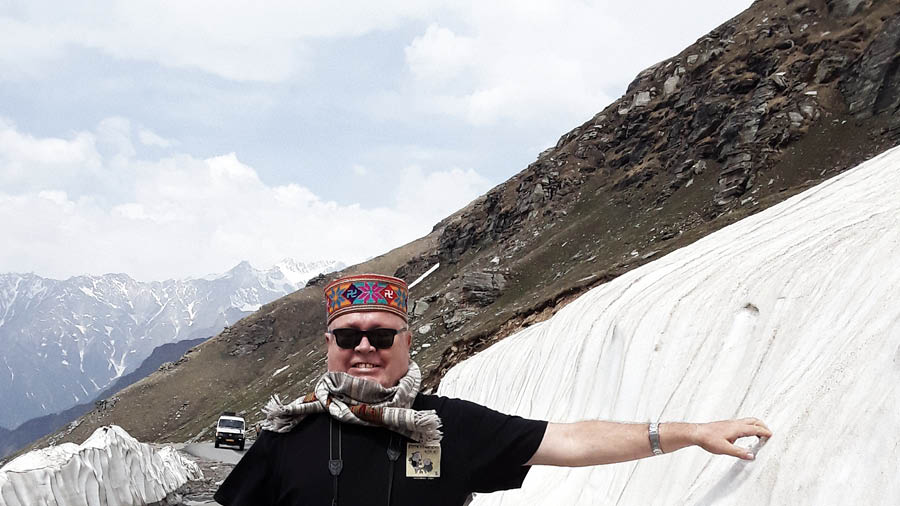
On a trip to the Himalayan mountains
Anjum HassanI spent the lockdown thinking through what I had done in the past and if there’s any red thread, and it struck me that more than anything else I’ve been obsessed about finding good food. I realised that my life had been a great food adventure through the cuisines of India and it might be something worth writing about. I asked a friend, Mita Kapur, who has also written books on food, if I should really write it and she said ‘absolutely yes’. She’s also a literary agent, so even before I wrote it she knew it’d get published and that gave me the encouragement to take on the subject.
You have been travelling around India for a long time. Is there any travel memory that stands out?
Definitely my first visit to Assam. Everything went wrong from the start, but ended right. My berth on the train to Guwahati had been allotted to some other guy who refused to share, so I had to sit in a corner for the three nights it took to travel there from south India. The dude in my berth got off at New Jalpaiguri, leaving me to finally inherit our common berth. I had barely stretched out before we were told that the railway track ahead, somewhere in Assam, had been sabotaged. We had to wait all day for buses to evacuate us to Guwahati, which was completely flooded due to monsoon rains. I had to walk through water up to my tummy as the Brahmaputra inundated the town. I still found it worth the trouble and learnt a lot about Assamese tea culture — they drink tea very differently there from the rest of India. Then, on the train to Delhi, my luggage was stolen and I lost my passport, money and everything else. But other passengers showed their kindness by giving me cigarettes, buying me food, and generally helping out with a bit of cash. Despite all the setbacks, in hindsight, it was a fabulous adventure.
I’ve visited Kolkata over 20 times and what keeps pulling me back is the food scene and the highly evolved restaurant culture.
Your top two food experiences that find mention in Digesting India?
If I must single out something, I’d love to return to Tiruppur to eat Kongu Nadu food at Junior Kuppanna’s, which is just awesome, down-to-earth cooking, but enormously satisfying for the soul. I also miss north Indian street eats, especially litti-chokha, which one gets in Bihar and eastern U.P., but it’s hard to get outside that area.
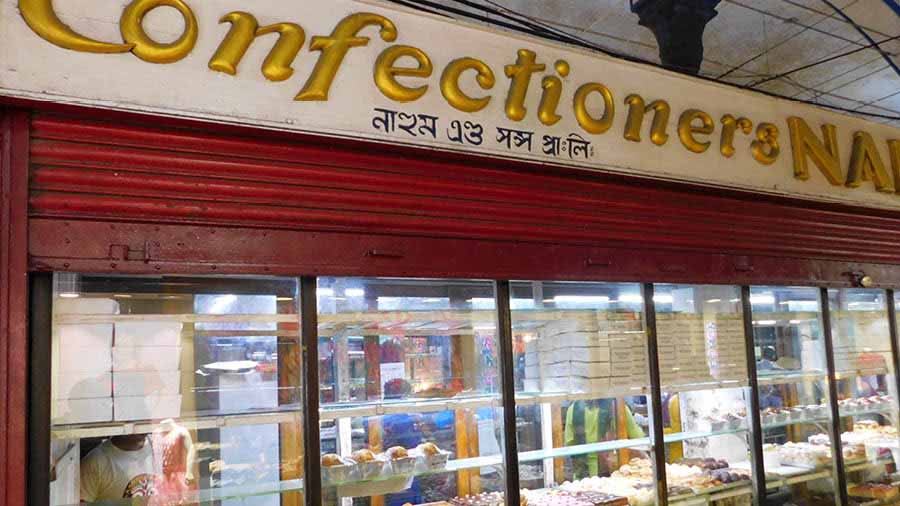
While Bengali-style mustard fish is a favourite, Zac also appreciates the restaurant culture and variety of eateries the city has to offer
Zac O’YeahHave you been to Kolkata often? What’s your favourite thing about the city, and your favourite food here?
I’ve visited town some 20 times over the years and the best thing, which keeps pulling me back, is the food scene and the highly evolved restaurant culture. It’s the perfect city for food tourism and I love sampling the old-style Anglo-Indian dishes at classy places like Mocambo, and nibble on bar snacks at seedy pubs like Olypub around the corner, do coffee at the old Coffee House in the university area, and then head out to Tangra for some Chinese... and that’s just for starters.
I really enjoy stuffing myself silly on Bengali food at canteens like at Siddheswari Ashram, near New Market, or Suruchi on Elliot Road. And then of course I always shop in the New Market’s outlets like Nahoum’s Bakery and keep an eye out for Bandel cheese and other cheesy things in the small shops thereabouts, before having kathi roll from some streetside stall nearby. To do Kolkata justice from a foodie point of view, one really has to spend an entire week in its restaurants. Nothing less flies.
A foodie rapid fire
Most loved Indian cuisine/dish?
- Dal-roti is something I can never tire of
If someone were to begin discovering you as a writer, which book should they start with?
- I think Digesting India is really probably my best book so far, so why not pick it up and check it out next time one spots it in a bookshop?
Your top three favourite travel or food books.
- Travels with the Fish by C.Y. Gopinath; Hunter S. Thompson’s Fear and Loathing in Las Vegas, although the author mostly has narcotics there; and then of course, Digesting India by myself.
One Indian drink you’d recommend everyone to try at least once
- Palm toddy in Kerala
One Kolkata/Bengali dish you can never say no to.
- Mustard fish — it combines the two best ingredients in the world, namely mustard and fish.




